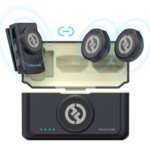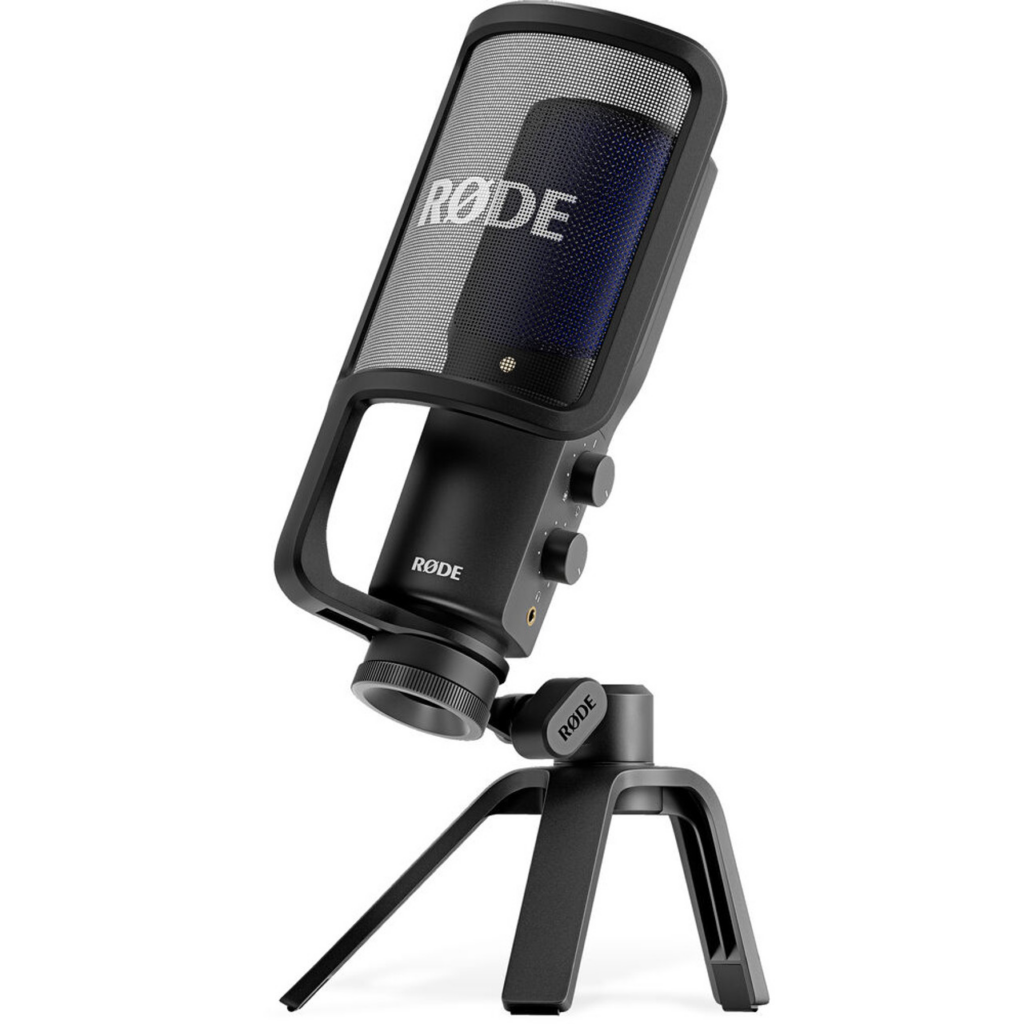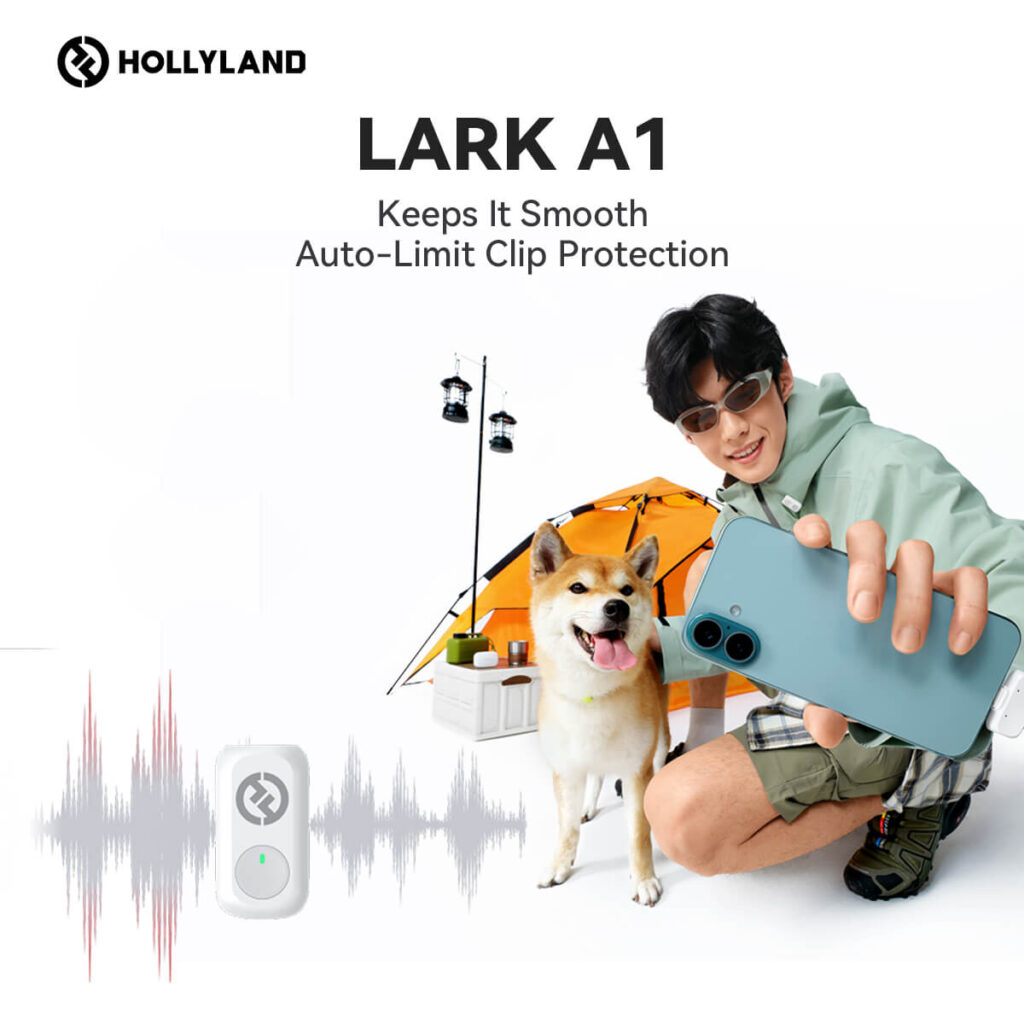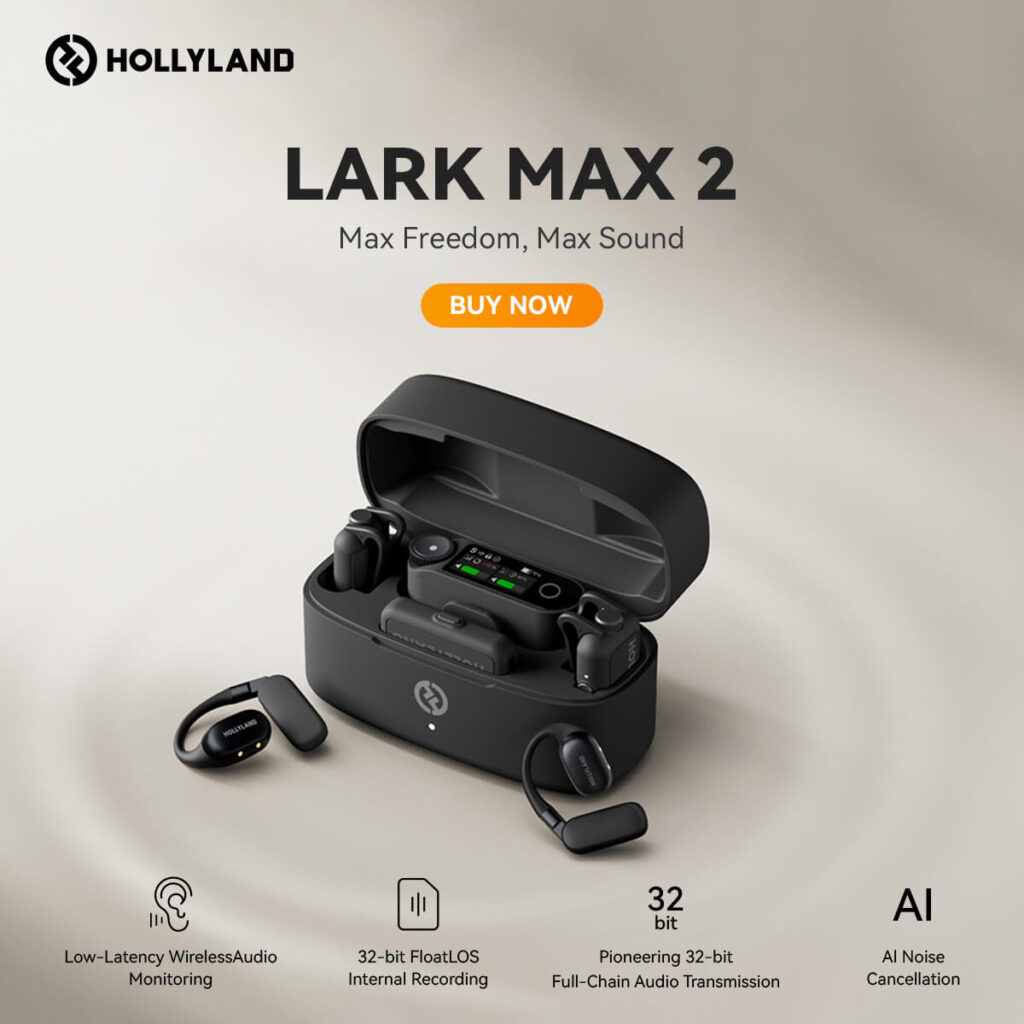The differences between a “good” and a “high quality” microphone may not be apparent to casual Friday night karaoke singers or beginner studio engineers. From a considerably more flexible sensitivity range and minimal self-noise to superior sonic performance, a high quality microphone can change how you perceive (and produce) sound.
They, however, come in all types, shapes, and sizes. More importantly, most mics deserving of the “high quality” prefix are specialist microphones that excel in niche situations.
Our sound hardware experts have shortlisted the best high quality microphone models you can find in 2024, but beyond recommendations, we’ll also provide you with an in-depth guide about choosing the one that fits your needs.
High Quality Microphone Comparison
| Microphone | Weight | Frequency Response | Polar Pattern | Signal-to-Noise Ratio | Connectivity Mode | Price |
| Hollyland Lark MK2 | 0.3 oz | 20 Hz – 20 kHz | Omnidirectional | <70 dB | Transmissiter/Wireless | $150-170 |
| Logitech Yeti | 1.2 lbs | 20 Hz – 20 kHz | Cardioid, omnidirectional, bidirectional, stereo | <100 dB | USB wired | $99 |
| AKG P420 | 1.1 lbs | 20 Hz – 20 kHz | Cardioid, Omnidirectional | <79 dB | XLR wired | $199 |
| Shure SM58 | 0.72 lbs | 50 Hz – 15 kHz | Cardioid | <71 dB | XLR wired | $99 |
| Rode NT-USB | 1.1 lbs | 20 Hz – 20 kHz | Cardioid | <94 dB | USB wired | $169 |
| Audio Technica AT4033/CL | 13.4 oz | 30 Hz – 20 kHz | Cardioid | <70 dB | XLRM wired | $399 |
6 Best High Quality Microphones
Hollyland Lark M2

One of the newest additions to the Hollyland microphone catalog, Lark M2 launched in January this year and is already the main talking point among professional vloggers, bloggers, and content creators.
Picking up where M1 left off, the Lark M2 brings an enhanced operating time of a whopping 10 hours per charge, nearly twice as long transmission response at 1,000 ft, and an industry-leading portability with just 0.3 oz of weight.

2-Person Wireless Mini Button Microphone.
If you’re looking for a reliable plug-and-play microphone, Lark M2 is the way to go. It’s small and light enough to be worn on any piece of clothing, but since it’s an omnidirectional mic, you can place it against any sound source and get dependable results.
Arguably one of the most prominent benefits of this microphone is Hollyland’s proprietary HearClear sound cancellation technology. With a tap of a button, you can shut off ambient noise and completely focus on the sounds you want to record.
Key Specs:
- Wireless transmission up to 1,000 feet
- Omnidirectional polar pattern
- Frequency response range spanning from 20 Hz to 20 kHz
- STR under 70 dB
- 24-bit 48 kHz audio quality
Pros:
- One of the most compact microphones around
- Excellent audio quality
- Eliminates outside noise with HearClear ANR tech
- Versatile applications due to exceptional portability
- Long battery runtime
Cons:
- Difficult to attach on flat surfaces
- Pricey
Price: $150 to $170
Logitech Yeti

The multi-award-winning “Yeti” will soon celebrate its 25th birthday, and even though it’s an “old” model, it is considered an essential microphone for musicians, podcast hosts, and journalists even today.
At first look, the Classic Yeti is a big, well-designed USB microphone with traditional, if not nostalgic aesthetics.
What makes it different from most alternatives is the fact that it can be a cardioid, bidirectional, omnidirectional, or stereo microphone whenever you need it. Thanks to Logitech’s custom microphone capsule array, you can seamlessly shift between these modes and adapt to virtually any environment.
You can use the onboard controls to fine-tune the performance of your Yeti, but you can also download the free VO!CE app and take audio customization to the next level. The software unlocks the ability to perfect the basics (such as EQ, gain, and more), but it also features a variety of effects. Use pitch shifter, chorus, echo, or reverb to shave hours off post-editing.
Even though this microphone does not have togglable external noise reduction functions, it rocks a sturdy in-built shock mount that passively deletes unwanted sounds from its focus.
Professionals in various industries, especially musicians and audio engineers, still hail Logitech Yeti as one of the most reliable studio microphones out there, even though multiple “improvements” have been released in recent years.
Key Specs:
- USB connectivity
- Custom mic capsule array supporting 4 pickup modes
- Frequency response range spanning from 20 Hz to 20 kHz
- STR under 100 dB
- 16-bit 48 kHz audio quality
Pros:
- Configurable polar patterns
- Robust yet elegant build
- Low self-noise and minimal distortion
- Perfect for casual and critical listening
- Simplified onboard controls
Cons:
- No background noise reduction
- A bit bulkier than average
Price: $99
AKG P420

The famed P420 has been around since 2009, serving as a reliable backup for sound engineers, and a microphone of choice for low-budget makeshift studios.
The reason why we firmly believe it deserves a high-ranked spot on our list of quality mics lies in its exceptional versatility. Although AKG markets it as a dedicated “instrument microphone”, this model rocks exceptional audio quality, a neutral sonic signature with a bit of pleasant warmth, and a robust casing protecting it from occasional dings.
With an excellent sensitivity rating sitting at 28 mV/Pa, solid STR, and an integrated bass cutout filter, it doesn’t need active noise canceling features – it eliminates background sounds quite efficiently on its own.
AKG’s P420 leans on the heavier side with a little over a pound of weight, but its intelligent design makes it decently portable. Similar to old-school Sennheisers, this microphone boasts multiple polar pattern modes, including cardioid, omnidirectional, and Figure 8.
If you intend to use it the way AKG’s engineers meant you to, you’ll soon fall enamored with its pinpoint accuracy in recording almost any kind of instrument. From piano and strings to horns and woodwind instruments to drum kits big and small.
The brand also provides complimentary accessories, namely a shock mount and a neat little carry case to compensate for its poorer-than-average compactness and portability. Overall, it’s a solid all-around option for recording and streaming audio, mostly indoors, but with the right setup, it works like a charm outside, too.
Key Specs:
- XLR 3-pin wired connectivity
- Omnidirectional and cardioid polar patterns
- Frequency response range spanning from 20 Hz to 20 kHz
- STR under 79 dB
- Complimentary spider shockmount & carry case
Pros:
- Three polar patterns
- Magnificent durability
- Ideal for recording musical instruments and voice
- Reliable passive noise cancelation features
- Togglable pre-attenuation
Cons:
- Only works with male XLR connectors
Price: $149
Shure SM58

The king of budget microphones, Shure SM58 is widely popular for its reliable performance, tight frequency response range, and phenomenal build quality.
It’s one of the finest cardioid mics available, boasting a uniform cardioid polar pattern absorbing even the heaviest of gain waves head-on, efficiently repulsing every speck of sound outside its designated zone of control.
Shure’s engineers purposefully narrowed its frequency range to 50-15,000 hertz, boosting the lows while cutting away unnecessary highs.
It’s a specialist microphone that is perfect for podcast and radio hosts, streaming content creators, YouTubers, and musicians (excluding bassists and vocalists), but it’s also recognized among the most reliable road-worthy tools for bands recording live shows. Journalists also love its integrated pop filter, as it delivers solid passive sound reduction benefits.
With rugged construction, Shure’s SM58 was built to last years, if not decades given the proper maintenance. Its steel grille and metal frame are capable of effortlessly shrugging off extensive wear and ensure the microphone performs consistently across the board.
Similar to AKG P420, this is an XLR-connectivity type of microphone, but it’s a dedicated cardioid model. It effortlessly picks up sounds targeted at its front and sides while completely ignoring the noises coming from the back.
Key Specs:
- XLR connectivity
- Cardioid pickup pattern
- Frequency response range spanning from 50 Hz to 15 kHz
- STR under 71 dB
- Pneumatic shockmount
- Integrated pop filter
Pros:
- Almost unparalleled durability
- Superb audio quality for its price
- Tight frequency response range
- Almost zero self-noise
- Effective ambient noise cancellation
Cons:
- Unsuitable for audio recordings favoring highs
Price: $99
Rode NT-USB

Rode’s NT-USB is a schoolbook example of a well-made mid-range cardioid condenser microphone. With a detailed yet neutral sonic signature, neglectable self-noise levels, standard frequency response, and convenient USB connectivity, it’s a safe pick for anyone looking for a high-quality microphone.
Unlike specialist models like Shure SM58, NT-USB offers an all-rounded performance. It boasts simple inline controls, plug-and-play operation, and support for well-made companion apps that can be used to fully control and fine-tune its main aspects of performance.
Durability-wise, it rivals SM58 and P420 with excellent build materials and a classic, tried & true design.
We mainly recommend NT-USB to vocalists, podcast hosts, and speakers. It’s perfectly usable for instrument audio recordings and can vividly capture sounds in smaller enclosed spaces, but it shines the brightest when you focus on a single tone.
Key Specs:
- USB connectivity
- Cardioid pickup pattern
- Frequency response range spanning from 20 Hz to 20 kHz
- STR under 94 dB
- Inline controls
- Tripod Stand
- Integrated pop filter
Pros:
- Robust metal construction
- Easy plug-and-play operation
- Pristinely clear vocal recording quality
- Simple mechanical controls and comprehensive app-based settings
Cons:
- Slightly more expensive compared to popular alternatives
Price: $169
Audio Technica AT4033/CL

Audio Technica has been the leading edge of progress in the studio gear space for years, and even though its AT4033/CL is among its older models, the microphone perfectly reflects the brand’s commitment to excellence.
AT4033/CL is a godsend for critical listening and studio work while podcast hosts and content creators like it in equal measure. With an uncolored sound signature, flat frequency response, and outstanding audio quality, it set the standards for generations of up-and-coming studio microphones.
This mic boasts an impressive signal-to-noise ratio complemented by an inbuilt high-pass filter and 10 dB attenuation pad. It excels at capturing the authenticity of the moment and passively blocks almost all ambient noises.
What makes it relevant and arguably superior to much newer microphones is its ease of use and reliability. The simple controls coupled with exceptional specs ensure the microphone delivers consistent, predictable results in practically any environment.
Key Specs:
- XLRM wired connectivity
- Cardioid pickup pattern
- Frequency response range spanning from 30 Hz to 20 kHz
- STR under 70 dB
- AT844 shock guard
Pros:
- Natural, uncolored sonic signature
- Built-in 80 Hz filter & 10 dB attenuation pad
- Requires very low phantom power to operate
- Remarkably beginner-friendly design
Cons:
- Expensive
Price: $399
How We Ranked the Best Microphones
We followed several key factors as criteria for distinguishing high-quality microphones from other alternatives, including:
- Audio quality: well-made electronics with low self-noise, optimal sensitivity, and uncolored sonic signatures tend to provide superior-quality sound.
- Durability: sturdy built-to-last microphones are necessary for consistent results, as they won’t lose performance as quickly as low-tier models.
- Noise reduction: keeping unwanted noises away is one of the most important factors you should always keep in mind.
- Stable connectivity: whether it be USB, XLR, XLRM, or wireless, a microphone’s connectivity method must be reliable at all times.
- Ease of use: high-quality microphones have a shallow learning curve, and most people can efficiently use them right out of the box.
Conclusion
A high quality microphone is a prerequisite for quality work. Whether you’re professionally recording every day or simply looking to buy a solid mic for recreational use, the result of your projects largely depends on your gear, so it’s always smart to invest in a well-made model.
We hope that our shortlist of the top 6 best high quality microphones helped you pinpoint the one that caters to your individual needs.
FAQs
Who makes the best high-quality microphones?
Established brands like Hollyland, Logitech, AKG, Shure, Rode, and Audio Technica make some of the finest and most reliable high-quality models.
Are high-quality microphones expensive?
The average price for quality mics spans from $100 to $500.
Who needs a high-quality microphone?
Professional sound engineers, musicians, podcast & radio hosts, and content creators need high-performing microphones to deliver consistent audio quality in their work.
Where to buy good microphones?
All reputable brands offer their microphone models directly from their websites, but many partner with online marketplaces like Amazon or Sweetwater and exclusively sell their products via their retail stores.





























.png)



